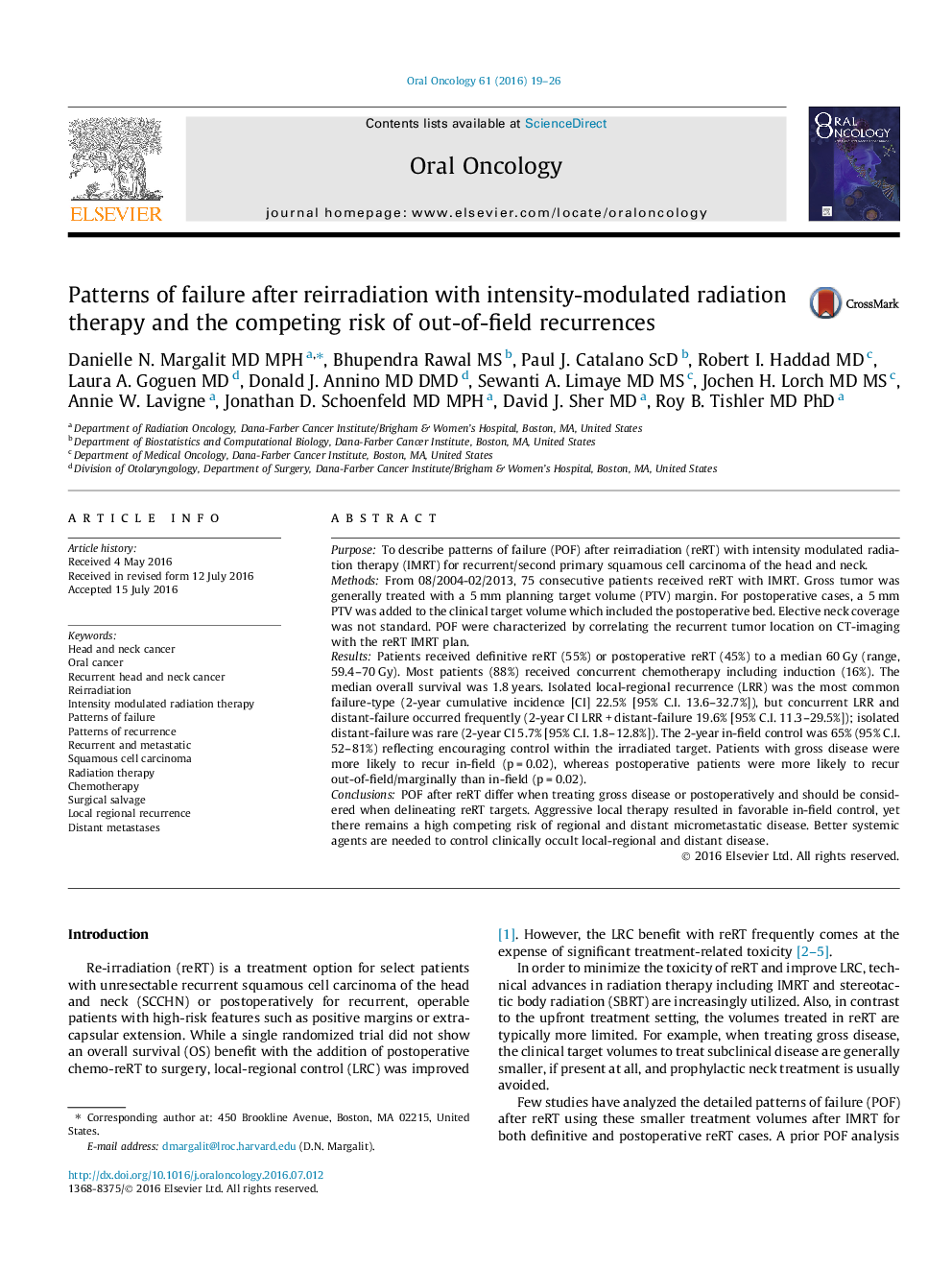| کد مقاله | کد نشریه | سال انتشار | مقاله انگلیسی | نسخه تمام متن |
|---|---|---|---|---|
| 3163719 | 1586249 | 2016 | 8 صفحه PDF | دانلود رایگان |
• Patterns of failure differ when reirradiation is definitive versus postoperative.
• After definitive reirradiation, in-field failure is the most common local-regional failure.
• After postoperative reirradiation, out-of-field failure is more common than in-field.
• Concurrent distant failure occurs frequently with local-regional recurrence.
PurposeTo describe patterns of failure (POF) after reirradiation (reRT) with intensity modulated radiation therapy (IMRT) for recurrent/second primary squamous cell carcinoma of the head and neck.MethodsFrom 08/2004-02/2013, 75 consecutive patients received reRT with IMRT. Gross tumor was generally treated with a 5 mm planning target volume (PTV) margin. For postoperative cases, a 5 mm PTV was added to the clinical target volume which included the postoperative bed. Elective neck coverage was not standard. POF were characterized by correlating the recurrent tumor location on CT-imaging with the reRT IMRT plan.ResultsPatients received definitive reRT (55%) or postoperative reRT (45%) to a median 60 Gy (range, 59.4–70 Gy). Most patients (88%) received concurrent chemotherapy including induction (16%). The median overall survival was 1.8 years. Isolated local-regional recurrence (LRR) was the most common failure-type (2-year cumulative incidence [CI] 22.5% [95% C.I. 13.6–32.7%]), but concurrent LRR and distant-failure occurred frequently (2-year CI LRR + distant-failure 19.6% [95% C.I. 11.3–29.5%]); isolated distant-failure was rare (2-year CI 5.7% [95% C.I. 1.8–12.8%]). The 2-year in-field control was 65% (95% C.I. 52–81%) reflecting encouraging control within the irradiated target. Patients with gross disease were more likely to recur in-field (p = 0.02), whereas postoperative patients were more likely to recur out-of-field/marginally than in-field (p = 0.02).ConclusionsPOF after reRT differ when treating gross disease or postoperatively and should be considered when delineating reRT targets. Aggressive local therapy resulted in favorable in-field control, yet there remains a high competing risk of regional and distant micrometastatic disease. Better systemic agents are needed to control clinically occult local-regional and distant disease.
Journal: Oral Oncology - Volume 61, October 2016, Pages 19–26
